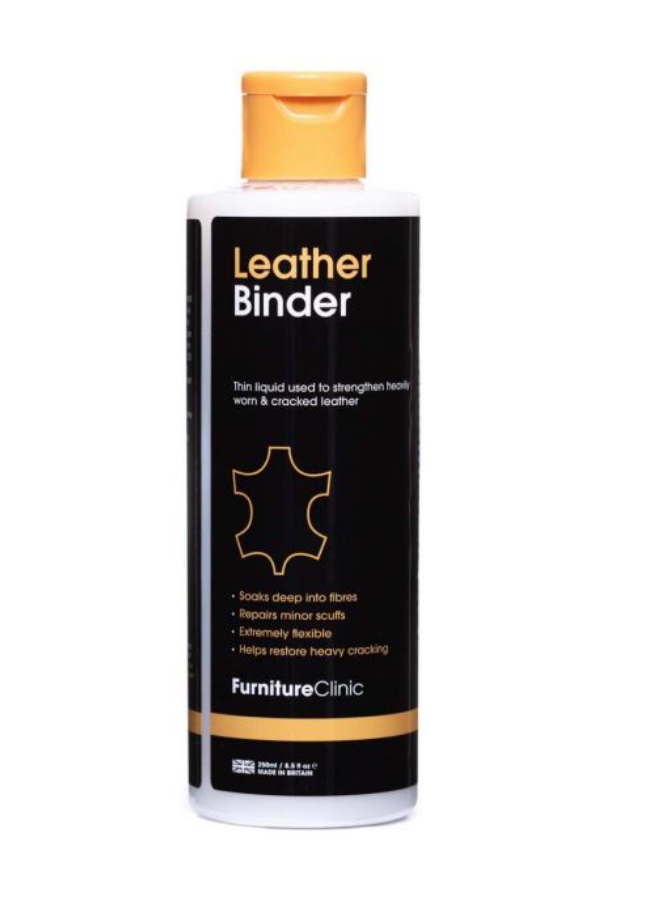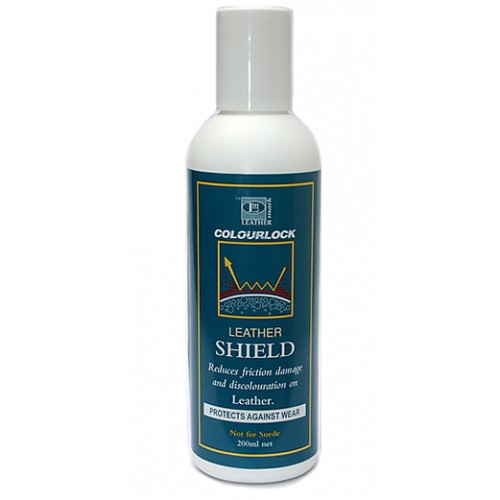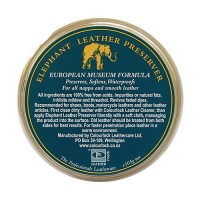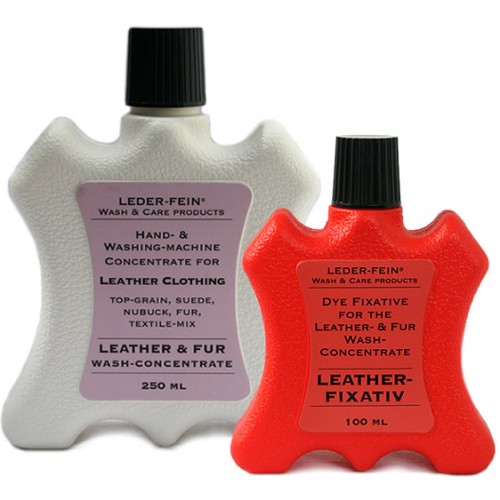Product Description
Leather Binder is a thin liquid filler that can be used to strengthen the weakened fibre structure of leather that is heavily worn or cracked.
It can also be used on small imperfections in the leather. This includes scuffs and scratches, allowing the leather to be sanded smooth.
The Binder soaks deep into the leather fibres holding them tightly together creating a stronger leather structure. This stronger structure greatly improves the tensile strength of the leather, which makes repairing leather easier and gives longer lasting results.
Why is this important?
Using the Binder gives you the confidence that when you make a repair you know it will last. For instance, if you just used the Flexfil you would get a great repair but it might not last. Not because the Flexifil isn’t good enough, but because the leather beneath it is weak – it is the leather that might tear open, not the filler. By using the Leather Binder first, you guarantee yourself a much longer lasting repair.
The Leather Binder also makes sanding worn leather possible. By strengthening the fibres, you can sand leather down that would otherwise have gotten worse as you sanded it.
Once the surface has been prepared you can apply the Leather Repair Paint.
-

Suitable for use on a jacket
-

Suitable for lounges suites and softas
-

Suitable for use on shoes
-

Suitable for use on handbags
-

Suitable for use on car seats
Suitable For Aniline and semi-aniline leather
Suitable For Pigmented leather / topcoat leather
Suitable For Oil and wax pull-up leather
Suitable For Two-tone and mottled leather
Suitable For Rub-off / antique finished leather
Suitable For Bicast leather
Suitable For Vinyl and faux leather, including bonded leather
Not Suitable For Suede and nubuck
For Light to Heavy Cracking:
The Leather Binder should be applied to the affected areas with a sponge. It should be applied with pressure to allow the product to soak into the fibre structure. Leave the Binder to dry; this can be sped up with the use of a hairdryer.
Apply a further three coats in the same way. It is important to use pressure when applying the Leather Binder for the first four coats, this will ensure that the product soaks deep into the network of fibres and hold them tight together which will create a much stronger base for a long-lasting repair.
You will notice as the Leather Binder soaks in, it will cause the absorbent areas to darken. At this stage, the surface can be sanded with wet and dry sandpaper, or for best results, a sanding pad to smooth out any raised or rough areas. You should always remove any dust caused from the sanding action with a cloth dampened in Alcohol Cleaner.
Several more coats of Leather Binder should then be applied; this time by gently wiping it over the cracks rather than applying pressure. Again, drying between coats. Applying the product in this gentle manner will allow it to build up in the damaged areas and start to fill out the cracks. Numerous coats can be applied in this way to achieve the desired fill level.
Depending on the severity and depth of the cracks, they can be filled out with the Leather Binder alone. However deep cracks will be better being repaired using Flexifil.
Repairing Scuffs:
The Leather Binder should be applied to the damaged area with a sponge or cotton bud. It should be applied with pressure to allow the product to soak into the fibre structure. Leave the Binder to dry; this can be sped up with the use of a hairdryer. Apply a further two coats in the same way is normally required so that the damage can be sanded smooth. Further applications may be required if the area still looks and feels fibrous in areas. Colour restoration will then need to take place in the damaged area.
Why is the Leather Binder an important step in repairing damaged leather?
The fibre structure within the leather is what gives leather its strength. When leather becomes damaged, this fibre structure becomes weaker which may then lead to rips and tears. By applying the Binder first, it binds the loose fibres back together, making a much stronger base for the filler to sit on. If this step is missed out, the fibres beneath the filler will still be weak and may tear under the repaired area.
Do I have to use the Binder before repairing leather with one of the fillers?
No, it does not have to be used, however it is highly recommended as it greatly improves the strength of the leather, before applying the filler. This means that your repair will last a lot longer by using the Binder first.
I have a hole in my leather, do I still need to use the Binder?
If the hole is due to wear and tear then yes, we would recommend using the Leather Binder, however if the hole has been caused by a burn or something sharp, the fibre structure is more than likely still intact and therefore the Binder is not so important.




